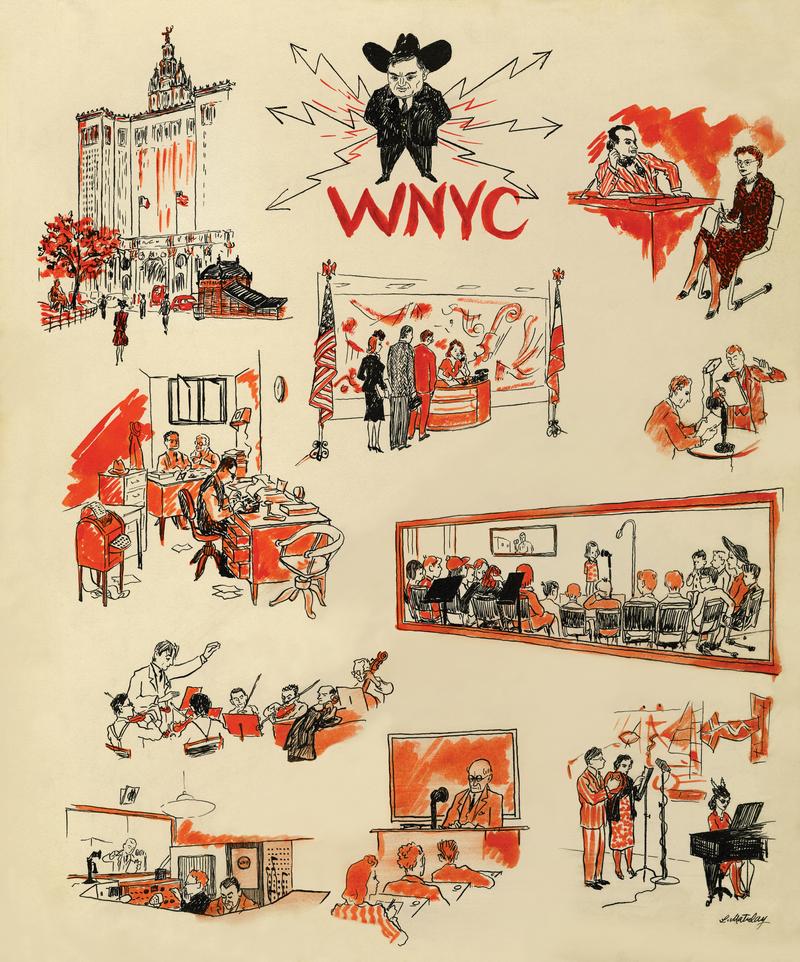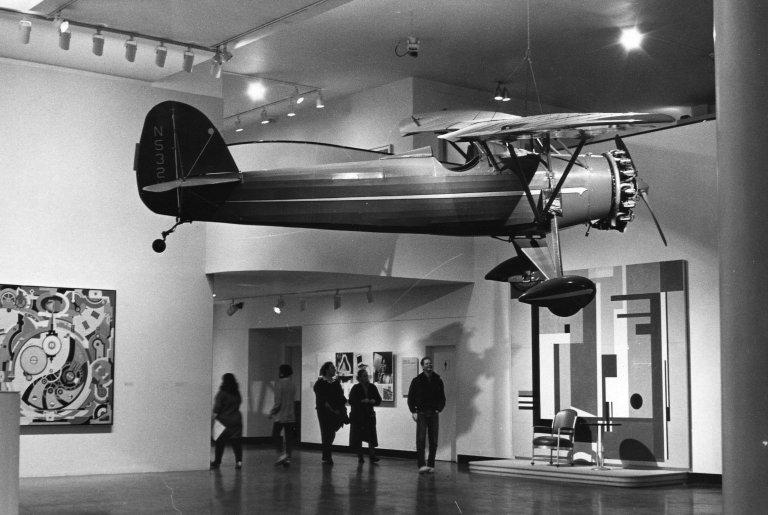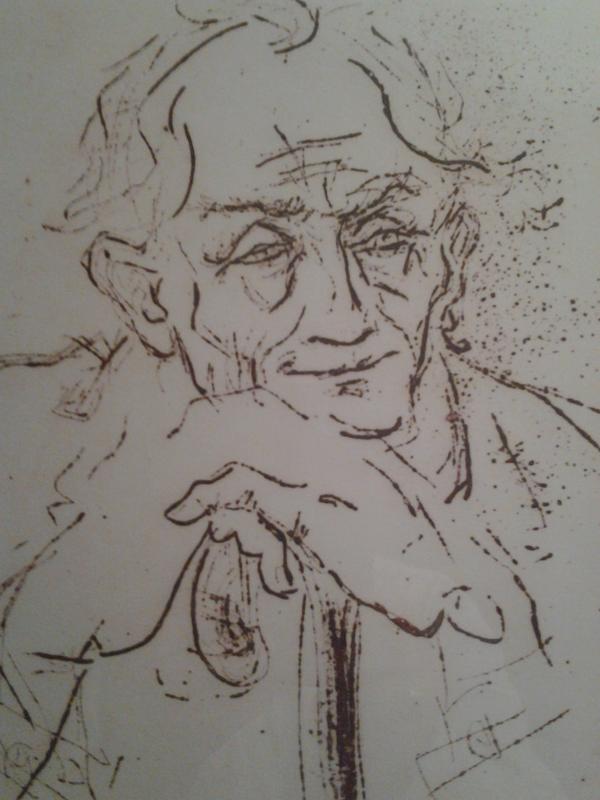 NYPR Archives & Preservation
NYPR Archives & Preservation
A WNYC Scene Sampler Circa 1939 by Laszlo Matulay

The Art
The figures and scenes, all drawn from life by artist Laszlo Matulay, capture the essence of New York's public radio station in 1939. Fiorello H. La Guardia ran for mayor in 1933 promising to close the station down to save taxpayer money. Seymour N. Siegel and others convinced La Guardia to keep it going, and he became its champion and a regular on-air presence. He is pictured top and center wearing his large trademark cowboy hat, a throwback to his youth as an Army brat on a military base in Arizona, where his father was stationed as a bandmaster.
The upper right-hand corner of this ink and watercolor work features WNYC Director Morris Novik and his assistant Viola Calder. Calder is sitting on one of the many Warren McArthur Art-Deco chairs that were part of the new WPA-built studios and transmitter site that opened in October 1937. The live studio audience for the little girl seen framed through the studio window is also sitting on these chairs. We have three in our collection. Some of this furniture was featured in a 1986-7 Brooklyn Museum exhibit, The Machine Age in America, 1918-1941.
In the upper left corner is the Municipal Building at 1 Centre Street, WNYC's home from 1924 to 2008. Underneath it is the newsroom, complete with an old Associated Press wire service teletype churning out news copy. I can't say for sure who the staff is, but it's possible the drawing includes newsmen Dick Pack, Nathan Berlin, and Jack Goodman. The lower-left corner reveals WNYC's small Master Control Room, which had just barely enough room for two engineers to work comfortably in.
Just below Mayor La Guardia is WNYC's then main reception desk at the north end of the 25th floor, where the elevator banks are. The receptionist is sitting in front of one of four WPA-commissioned murals dedicated on August 2, 1939. This one, by Louis Schanker, still hangs there. Another, in the lower right-hand corner with the three performers, is in Studio B. We know this because it is Mural for Studio B by Stuart Davis, on loan to the Metropolitan Museum of Art.
The Artist
Laszlo Matulay was an accomplished illustrator, muralist, painter, designer, and educator who grew up in post-World War I Vienna. He was the product of a mixed marriage, his mother Jewish, his father, Catholic. He was a student and working artist in Vienna.
As a boy, Matulay spent his summers in Transylvania among horses, peasants, gypsies, and Jewish laborers. Following his classical training in Vienna at the Academy of Applied Arts, he hitch-hiked to Italy with a sketchbook and went to museums and galleries. Returning to Vienna, he began to work in the theater, painting and designing stage sets under the architect Oskar Strnad. Not long after the first Nazi terrorist attacks in Austria, he fled the country and arrived in the United States in 1935 to settle in New York City. For a while, he worked with one of New York’s largest commercial art studios. In April 1937, some of his illustrations were exhibited at the New York Public Library. He became a highly sought after illustrator following an exhibition of his work at the 1940 New York World's Fair. His work appeared in Harper's Bazaar, Time, and Esquire.
During World War II, he was a cartographer with military intelligence and earned his U.S. citizenship. After the war, he served on the faculty at the Laboratory School of Industrial Arts in New York and was the first artistic director at Rodale Press in Emmaus, Pennsylvania. Matulay and his wife Harriet then settled in New Hampton, New Jersey, where he worked as a set designer for the Hunterdon County Repertory Company.
In 1975, he moved to Panama to learn Spanish and put together educational materials on family planning for the poor. Matulay later returned to the U.S. and closed out his career as a freelance illustrator. He was active until his death in 1999 at the age of 86.
Throughout his life, he worked closely with Jewish artists and designers involved with Jewish education. His papers and work are housed and overseen by Rabbi Seth Phillips at Keneseth Israel in Allentown, Pennsylvania.
____________________________________________
Original Laszlo Matulay illustration from the La Guardia Artifact Collection, The La Guardia and Wagner Archives, La Guardia Community College/The City University of New York.
Special thanks to the La Guardia and Wagner Archives’ Archivist, Douglas Di Carlo and for making a high-resolution scan of the original artwork available, Ira Faro from the Matulay Estate for the Matulay portrait permission to publish, and to Neil Kvern for his masterful PhotoShop restoration work on the original scan.

